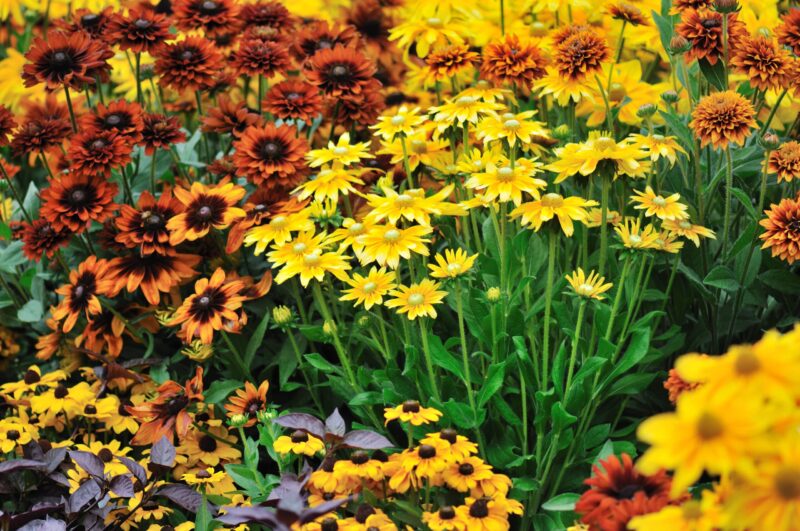Creating a pollinator-friendly garden for fall is a rewarding way to support local ecosystems and enjoy the beauty of your outdoor space. Fall is a crucial time for pollinators, as many are preparing for winter and need a steady supply of food and shelter. Here’s a guide to help you create a thriving garden with flowers and more that attracts bees, butterflies, and other pollinators during the autumn months.
Choose Late-Blooming Flowers
- Aster: These vibrant flowers bloom in late summer to fall and are a favorite of bees and butterflies.
- Goldenrod: Often mistaken for ragweed, goldenrod is an excellent source of nectar and pollen in the fall.
- Sedum: With its fleshy leaves and clusters of star-shaped flowers, sedum attracts a variety of pollinators.
- Russian Sage: This hardy plant has lavender-blue flowers that bloom well into the fall, providing nectar for bees and butterflies.
Incorporate Native Plants
Native plants are naturally adapted to your local environment and are more likely to attract local pollinators. Consider adding plants like Joe-Pye weed, purple coneflower, and milkweed to your garden. These plants not only provide food but also serve as host plants for caterpillars.
Provide Shelter
Pollinators need places to rest and take shelter during the cooler fall nights. Incorporate elements like leaf litter, log piles, and native grasses to offer shelter for insects and other pollinators. You can also add bee hotels to provide nesting sites for solitary bees.
Offer Water Sources
Pollinators need water to thrive. Create a simple water source by placing shallow dishes filled with water and adding rocks or pebbles for pollinators to land on. This will help them stay hydrated as they prepare for winter.
Avoid Pesticides
Pesticides can harm pollinators and disrupt the delicate balance of your garden ecosystem. Instead, use organic methods to control pests, such as introducing beneficial insects like ladybugs or using natural sprays made from neem oil or garlic.
Create a Continuous Bloom Cycle
To ensure your garden remains attractive to pollinators throughout the fall, plan for a succession of blooms. Plant a variety of flowers that bloom at different times to provide a steady supply of nectar and pollen.
Include Shrubs and Trees
Fall-blooming shrubs and trees like witch hazel and sumac can add structure to your garden while providing food and shelter for pollinators. These plants are also beneficial for birds, which may visit your garden in search of berries and seeds.
Find Flowers, Shrubs, and More at Sunny Valley!
When it comes to garden care, rest assured that we have what you need to help your outdoor garden thrive this season. To explore our inventory, check out our website or stop in and shop with us today!


